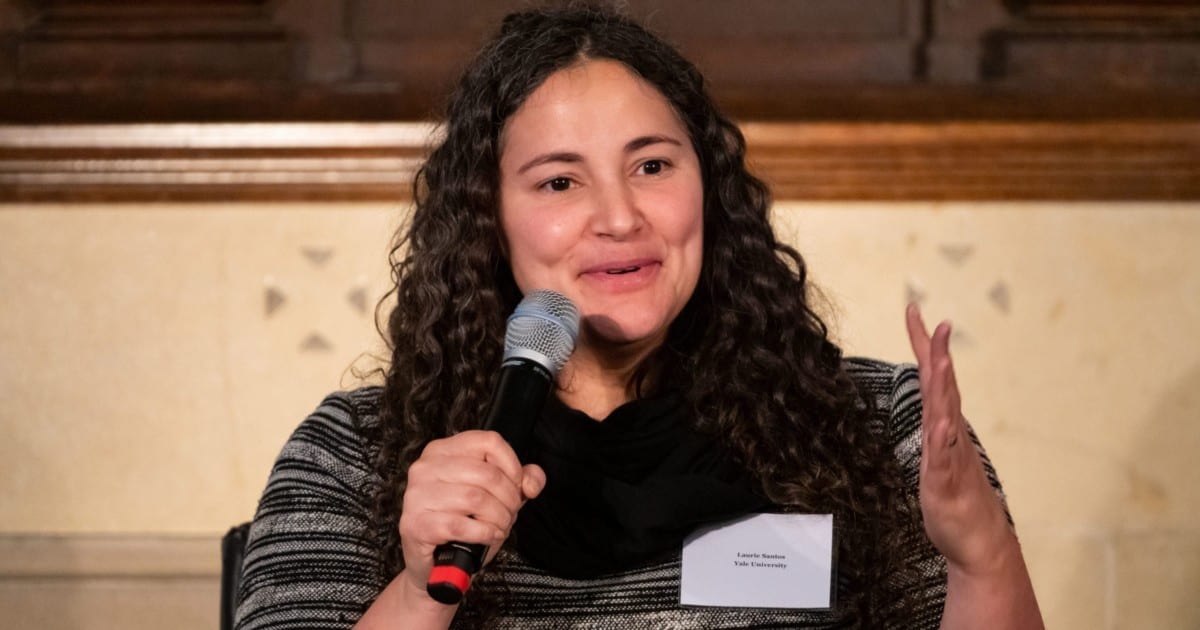For the last 20 years, the Jed Foundation (JED) has helped hundreds of colleges and universities strengthen their approaches to protecting their students’ emotional and behavioral health.
They will soon offer similar support for high schools in a move that reflects both the importance and the need to address emotional wellbeing much earlier.
“We’ve always thought that it makes sense to start earlier than college in developing things like resilience, social and emotional skills and mental health literacy, which is why we developed “Set to Go,” said JED CEO John MacPhee, referring to the high school-focused program that helps students and their parents prepare emotionally for the transition to college and adult living.
MacPhee says that when working with high schools on the “Set to Go” resources, the organization was met with significant demand for even more support.
“Schools were asking if we can help them in the same way we help colleges – by helping to assess and strengthen the policies, program and systems that can promote students’ mental health and reduce risks for suicide.”
According to a 2017 report from the US Department of Health and Human Services, 31 percent of students in grades 9 through 12 reported feeling sad or hopeless almost every day for two or more weeks. Suicide is now the second leading cause of death among young people between the ages of 15 and 28, according to the National Center for Health Statistics and the Centers for Disease Control and Prevention.
“Teachers, counselors, and psychologists are reporting an increase in social-emotional challenges and difficulty regulating attention, concentration and executive functioning with students,” said Dr. Liz Donalds, a licensed clinical psychologist who works with public school systems. “Increased academic pressures, along with 24/7 social media access can exacerbate already existing mental health issues and vulnerabilities.”
As experts confront the increase in mental health issues, JED is working on offering high schools a framework for action and prevention.
“Our premise is that schools need to have a strategic plan – a comprehensive plan based upon a needs assessment and resulting recommendation to address identified gaps – so they are intentional about what they’re doing, how they’re doing it and how it all fits together,” said MacPhee.
MacPhee said that many of the resources that guide schools in planning for mental health support already exist but need to be aggregated and deployed accordingly. To give high schools the same type of strategic planning framework it offers to colleges, JED is revising its signature JED Comprehensive Approach for Colleges and Universities and its JED Campus assessment on which a school’s campus plan is based.
To help do so, they have partnered with Dr. Stephanie Pinder-Amaker, Director of the College Mental Health Program at McLean Hospital, to create a Comprehensive Approach for Mental Health Promotion and Suicide Prevention for High Schools.
Pinder-Amaker said she and her team are working with JED to synthesize the research literature to develop an evidence-based model for high schools, highlighting the need for strategic planning, equity and the integration of multi-culturally informed considerations across every domain (e.g., for promoting social and emotional learning and academic skills, a safe environment, help-seeking behavior, school connectedness, etc.).
“We wouldn’t wait until the first year of college to begin teaching study skills and critical thinking. The same is true for mental health, said Pinder-Amaker, who notes that trends in college student mental health have been directing the field precisely toward these “upstream” strategies.
“Secondary schools, teachers, staff, parents and community members are uniquely positioned to work together to seamlessly promote critical mental health skills, but they need support,” she said. “The new model and technical support will help guide these efforts.”
To get insight into high school students’ perspectives on their own mental health, help-seeking behaviors and awareness of supports, JED has enlisted the help of Drs. Daniel Eisenberg and Sarah Ketchen Lipson and their team at the Healthy Minds Network to develop a high school version of the Healthy Minds Survey, the widely used annual survey study examining students’ attitudes, awareness and behaviors on mental health among undergraduate and graduate students.
Off and Running
With the comprehensive framework and survey nearing completion, MacPhee says JED will be working with between 5 to 10 schools by the end of the year. While he hesitates calling these “pilot schools,” he said that part of serving these first schools is to learn and make potential adjustments to the model, particularly given the many differences that exist between college and high school populations, starting with the fact that high school students are not adults.
Participation in the Healthy Minds survey, therefore, will require parental permission.
“With secondary schools, parents and families become a very important component to the ecosystem. Students (mostly) live at home and in communities, so when you think about things like identifying someone who might be struggling, and then interventions or systems you can put in place, it can be more complicated.”
MacPhee says the concept of recognition and referral to care is key, which, for high schools, will require a heavier reliance on finding and working with providers in the community.
Another major difference is in the numbers.
Through its JED Campus program, JED currently services 310 of the country’s 3,000 or so non-profit colleges and universities, whereas there are some 40,000 high schools in the United States. For MacPhee, this raises questions about how to best scale the program and resources.
“What level of assistance will be most beneficial for districts and individual high schools? What is that lowest effective dose of technical assistance and support to help schools create a comprehensive plan for strengthening mental health supports and reducing risks for suicide?
“Given the number of high schools in the country and the potential for significant interest in the program, what will the sources of revenue be to help us scale up to meet that demand? These are the kinds of questions we are working through.”
JED Campus is offered to colleges at a subsidized cost that covers a four-year period. While there will be a price to the new high school program, the JED High School launch has to date been funded by generous grants from the Morgan Stanley Foundation, Jolene McCaw Family Foundation, Saks Foundation and other funders.
As they refine their framework and work through their scaling model, the JED High School program will likely benefit from a national trend in which states are requiring K-12 school districts to provide mental health education and to have a mental health and suicide prevention planning process.
California now requires suicide prevention protocols and plans for all high schools; and legislation is pending in other states, including New York calling for comprehensive mental health planning and training.
These trends reflect the growing concern of the public that we not leave the mental health of teens and young adults to chance – an assertion that underlies JED’s work in both high schools and higher ed.
“Our goal is to create a movement, and an understanding among all the stakeholders, that schools represent a tremendous opportunity to protect the mental health of young people and, accordingly, schools should have a thoughtful, comprehensive and inter-disciplinary plan to promote mental health and reduce risks for substance misuse and suicide that becomes standard practice. We’re here to help, but our long-term vision is that we are not needed because the vision becomes the norm.”




